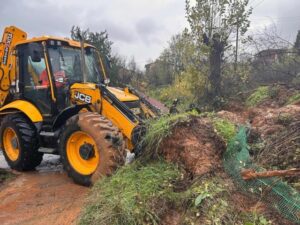According to a statement released by Heriot-Watt University, hominins living in what is now Europe some 250,000 years ago used fire for cooking, heating, and defense, pushing back the controlled use of fire by some 50,000 years.
A team of researchers led by geochemist Clayton Magill of Heriot-Watt University and archaeologists Susana Rubio-Jara and Joaquín Panera of Complutense University analyzed the remains of a fire from Valdocarros II, an archaeological site in central Spain. They determined that the fire had been built to encircle something, indicating that humans had made and controlled the fire, Magill explained.
Such a fire may have been situated in a sleeping or living area, a kitchen, or an enclosure for animals, he added. The chemical composition of the charred remains also suggests that certain types of wood had been chosen for their heat and lack of smoke when burned. Next, the researchers will analyze stone tools found near early hearths and look for traces of the preparation of meats and plants. “We want to understand whether the selective or specialized use of tools is something that should go at least theoretically hand-in-hand with fire control,” Magill said.
source archaeology.org
Ask me anything
Explore related questions





